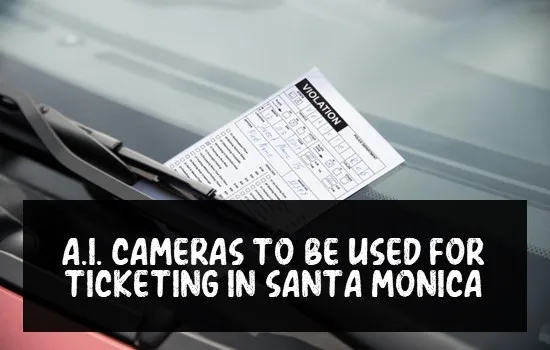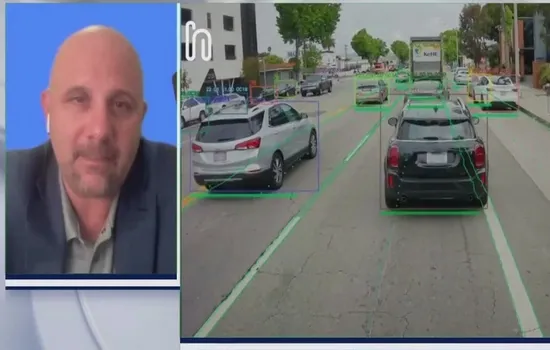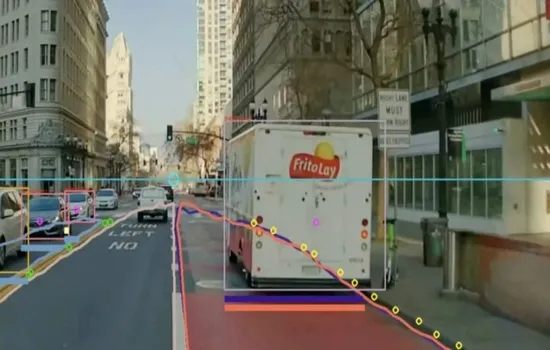Metro is looking to implement an artificial intelligence-powered camera system to ticket illegally parked vehicles in Santa Monica and other Los Angeles locations. The aim is to reduce parking violations that cause traffic congestion and delays for public transportation buses. Currently, vehicles parked in designated bus lanes or stops force buses to change routes and delay their scheduled times. This new AI-camera system will help Metro strictly enforce the no-parking rules.
Some key details about the impending program are that it will use cameras mounted on bus windshields. These cameras will use computer vision to detect any vehicles parked where they shouldn’t be. Details like license plate numbers will be captured and sent to the local transport authorities to automatically issue tickets. The program is planned to be launched by the end of 2024 after extensive testing and awareness campaigns.

According to the reports and official data, these cameras will record footage of parking violations in real-time, sending data to the Los Angeles Department of Transportation (LADOT) for final assessment and ticket issuance. The violation and tickets will be reviewed by a real person at the office and based on his views, a ticket will either be issued or removed.
Overview of Metro’s AI-Powered Camera Installation
So far, 15 cameras have been installed on buses plying on Metro route 720 connecting Downtown LA to Santa Monica. Other routes that will receive cameras include Route 212 from Hollywood to Hawthorne and routes 910, 950 and 70 from different parts of LA. The cameras will constantly monitor for violations using artificial intelligence and machine learning algorithms. Only when an illegally parked vehicle is detected will the footage and license plate details be recorded as evidence. This evidence will then be sent to LA transport authorities for review and potential ticketing.
Before tickets can be issued, there will be a 60-day warning period when first violations will be informational notices without penalties. This is to allow drivers to get acquainted with these new AI cameras. After the trials are complete, citations will start being given out automatically for violations detected by the cameras. The program’s success will depend on approval from the City of Los Angeles to fully implement this technology-driven initiative.
Benefits of Having AI Cameras On Busses for Parking Ticketing
Of course, there are many benefits to having such cameras on buses, as they’ll allow police and traffic control officers to fine offenders pretty quickly. Requiring less man power, this method is already being tested in various parts of the world. Below we have shared a quick overview of the benefits this method can offer.

- Faster bus travel times with fewer obstructions and delays caused by parked vehicles
- More people may choose public transit as viable option with faster service
- Automated tickets will help enforce rules more strictly reducing violations by 30-35%
- Revenue from fines can be invested in further upgrading bus services
- Real-time traffic violation data can optimize bus routes and timetables
Routes Affected by New AI Camera Installations
The AI-based ticket system is currently being piloted along the Big Blue Bus Route 720 between Downtown LA and Santa Monica. This route was chosen as around 20% of delays faced by buses are due to vehicles parked in restricted zones. Other routes being considered for cameras include those passing through areas with high traffic congestion like Main Street, Lincoln Blvd and Broadway.
The city plans to gradually add cameras to 50% of its municipal bus fleet serving these routes. This is expected to cover most violating hotspots based on historical traffic violation data analytics. The installation process will be completed in the next 8-10 months if the pilot program proves successful.

Future Plans for AI Integration in Urban Traffic Systems
Learning from the outcomes of this ticketing program, Santa Monica aims to apply AI-vision across its entire traffic management network. Road and intersection cameras could identify rule breakers like jumping red-lights or stopping in no-parking areas. 15-18% of riders and drivers feel such offenses aren’t detected properly today.
Data from these AI-cameras will be collected centrally for real-time adaptive traffic control. Rules like signal timings will adjust based on live road conditions to improve average speeds by 10-12%. Access to timely traffic updates using internet of things can also help commuters choose better routes, reducing average trip times by 15% as per estimates.
Final Words
If implemented well, artificial intelligence is expected to make a large difference in urban mobility. Not just fines from cameras but 15-20% savings in fuel and maintenance due to fewer traffic jams can occur. Strictness in implementation will push 5-7% more people to adopt public transit as well in a year and you can keep visiting AutoFreak as we will keep this post updated with more information on the topic.
Overall, AI-based traffic optimization may help Santa Monica achieve its long-term smart city goals. These include reducing commuting times by 25%, carbon footprint of daily commutes by 30% and traffic accidents in the city by 40-45% in the next 5 years. Strict parking enforcement through automated ticketing is a step towards such a future.


